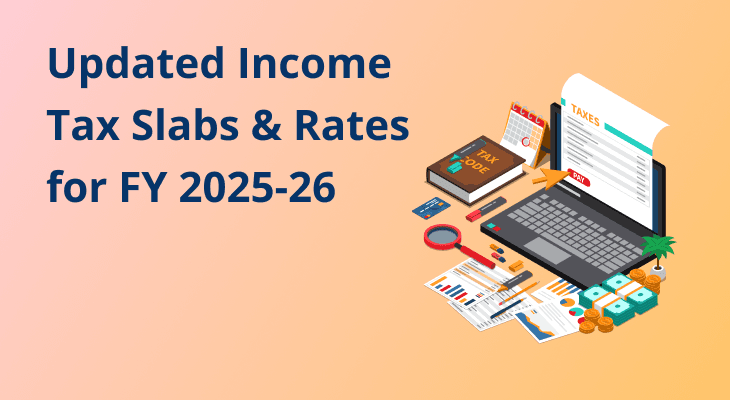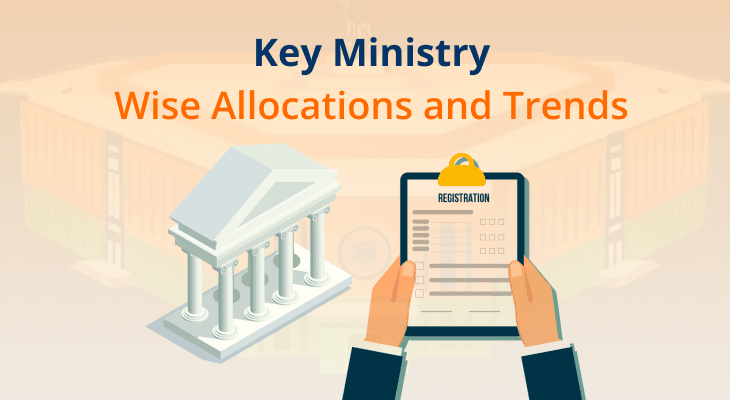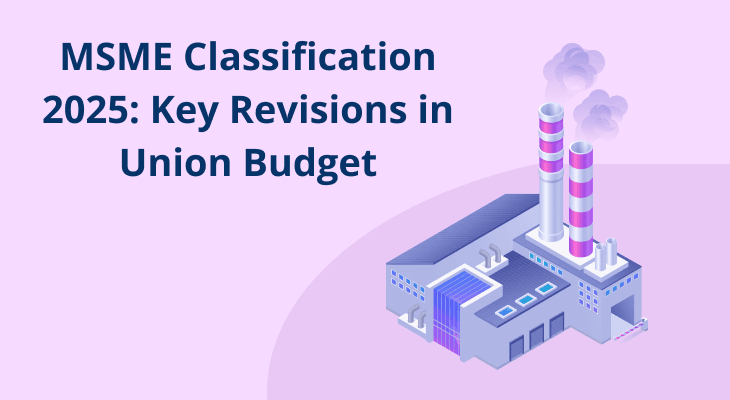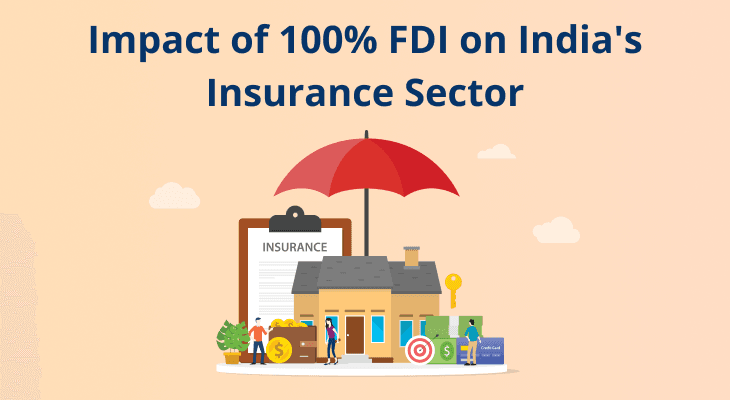
Updated Income Tax Slabs & Rates for FY 2025-26
The Union Budget 2025 has introduced significant changes to the income tax slab structure under the new tax regime. These updates are aimed at providing relief to middle-class taxpayers and simplifying the tax filing process. If you earn income from salary, business, or other sources, understanding the income tax slab for FY 2025-26 is crucial for tax planning.
Income Tax Slabs Under New Tax Regime for FY 2025-26
The new tax regime slabs for FY 2025-26 have been revised to offer higher rebate limits and simplified tax rates. The government aims to encourage more taxpayers to shift to the new regime by making it more attractive. Here are the new tax regime slabs:
Income Tax Slabs: Post Union Budget 2025 | Tax Rates |
Up to ₹ 4,00,000 | NIL |
₹ 4,00,001 - ₹ 8,00,000 | 5% |
₹ 8,00,001 - ₹ 12,00,000 | 10% |
₹ 12,00,001 - ₹ 16,00,000 | 15% |
₹ 16,00,001 - ₹ 20,00,000 | 20% |
₹ 20,00,001 - ₹ 24,00,000 | 25% |
More than ₹ 24,00,000 | 30% |
These income tax slabs will be applicable in FY 2025 - 2026. For the current financial year (2024-25), the new tax regime slabs are:
Tax Slab for FY 2024-25 | Tax Rates |
Up to ₹ 300,000 | NIL |
₹ 300,000 - ₹ 700,000 | 5% |
₹ 700,000 - ₹ 10,00,000 | 10% |
₹ 10,00,000 - ₹ 12,00,000 | 15% |
₹ 12,00,000 - ₹ 15,00,000 | 20% |
More than ₹ 15,00,000 | 30% |
Do keep in mind, although the new regime offers reduced tax rates and higher exemption limit, it removes many deductions available in the old tax regime, such as Section 80C, HRA, and deduction on interest on home loan, health insurance for self, spouse, and parents, etc..
Changes Made in the New Tax Regime in Union Budget 2025
The Union Budget 2025 introduced the following changes to the income tax slab 2025 under the new tax regime slabs:
- Increase in tax rebate limit: Individuals earning up to ₹12 Lakh (earlier ₹7 Lakh) will now pay zero tax after applying rebate under Section 87A. Tax rebate under Section 87A to be increased to ₹60,000.
- Basic Exemption: The base income tax slab in the new regime now starts at ₹4 Lakh instead of the earlier basic exemption limit of ₹3 Lakh.
- Lower tax rates: Tax rates have been rationalized across different income tax income slabs to reduce the overall tax burden.
- Marginal relief for individuals earning slightly above ₹12 Lakh: A new provision has been introduced to ensure that those earning just above ₹12 Lakh do not pay significantly higher taxes.
- Higher standard deduction for salaried individuals: The standard deduction for income from salary tax slab remains ₹ 75,000.
These changes make the new tax regime slabs more attractive for most middle-class taxpayers. However, it is advisable to consult a tax advisor to decide based on your unique financial situation.
How to Calculate Income Tax Payable Under the New Tax Regime
Knowing your income tax slab and how to calculate your tax liability are vital for optimising your finances.
Let us take an example to understand better. Suppose you earn ₹12 Lakh per annum as income from salary. In this case:
- Basic exemption up to ₹4 Lakh = 0
- 5% for amount between ₹ 4Lakh - ₹8 Lakh = ₹20,000
- 10% for amount between ₹8 lakh - ₹12 Lakh = ₹40,000
- Total tax payable = ₹60,000
- Revised tax rebate (under Section 87A) = ₹60,000
- Net tax payable = ₹ 0
So, those earning up to ₹12 Lakh per annum have nil effective income tax liability.
But, how about those earning more than this amount? Let’s assume your annual taxable income is ₹20 Lakh (after all applicable deductions, including ₹75,000 for salaried employees). In such a case:
- Basic exemption up to ₹4 Lakh = 0
- 5% for amount between ₹4 Lakh - ₹8 Lakh = ₹20,000
- 10% for amount between ₹8 lakh - ₹ 12 Lakh = ₹40,000
- 15% for amount between ₹12 Lakh - ₹16 Lakh = ₹60,000
- 20% for amount between ₹16 Lakh - ₹20 Lakh = ₹80,000
- Total tax payable = ₹2,00,000
- This amount is ₹90,000 less than the existing new regime income tax rates.
Note: These calculations are for illustrative purposes only. Consult a tax advisor to understand your actual tax liability for the year.
Conclusion
The income tax slab for FY 2025-26 under the new tax regime slabs offers lower tax rates and increased rebates, making it beneficial for middle-class taxpayers. The revised tax slabs 2025 ensure that individuals earning up to ₹12 Lakh pay zero tax, while those earning slightly above ₹12 Lakh get marginal relief.
If you earn a salary, understanding the income tax slab 2025 and how to calculate your tax liability under the new tax regime slabs will help you plan your finances better. The decision to opt for the new vs old regime will depend on your eligibility for deductions and exemptions.
An Income Tax Calculator helps you estimate how much tax you need to pay based on your income, deductions, and exemptions. Use our Income Tax Calculator to understand your tax liability better and plan smarter to save more.


